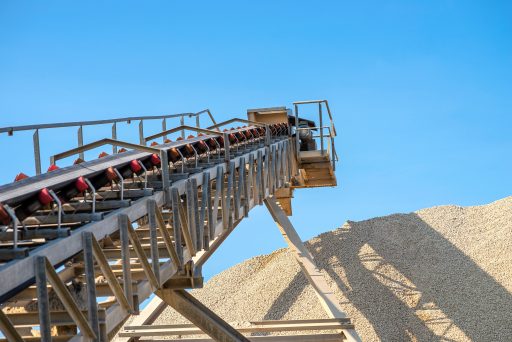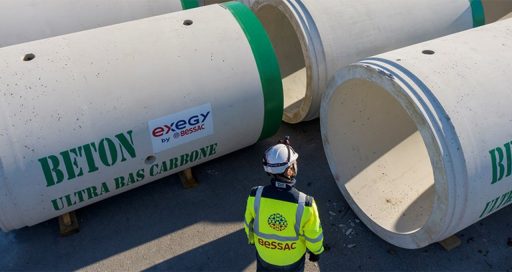Nuclear waste: what types of management solutions are there for different types of waste?
Reading time: 7 min
In recent months, nuclear energy has been back at the centre of debate. And the main focus is on what to do with radioactive waste. Solutions are being rolled out, driven by the innovative capacity of players in the industry. One such solution is Cigéo, a long-lived high-level waste disposal project in eastern France.
© Orano/LARRAYADIEU Eric
With the war in Ukraine raising the risk in Europe of a shortage of gas supplies from Russia, the nuclear industry is finding renewed credence as the centrepiece of strategies that address the major energy and climate-related challenges of tomorrow. This is due to its ability to continuously generate low-carbon electricity at competitive prices.
“Nuclear power still tends to suffer from a negative image, perpetuated by the memory of the Chernobyl and Fukushima accidents. However, people have a very poor understanding of it, whether the physical process, industrial treatment procedures, associated safety ecosystem or major innovations being researched in the field,” says Pascal Champ, director of non-destructive testing operations in the VINCI Energies nuclear division. The division implements its electrical, mechanical, ventilation and non-destructive testing competencies from the engineering through to the works stage, backed by the VINCI Group’s civil engineering know-how.
“Our positioning is rather unique since we’re neither waste operators nor managers. We act as an integrator across an extended spectrum of expertise, mobilising various Group business units to respond to public or private tenders,” explains Pascal.
Examples of business units include Omexom Cherbourg, which was involved in works to increase capacity at the Orano la Hague facility; Cegelec CEM, which installed radioactive waste encapsulation and storage systems at EDF’s Bugey facility; and Actemium Projets Nucléaires France and Actemium Tricastin, which installed and tested power and data systems and perimeter security systems at the CEA (French Alternative Energies and Atomic Energy Commission) and Orano facilities among others.
The varying hazard levels of waste
One of the major sources of tension immediately associated with nuclear energy is radioactive waste. While all types of waste are radioactive, they do not all present the same degree of hazard. This hazard is calculated on the basis of two variables.
The first is the level of radioactivity. This is expressed in Becquerels to specify how many atoms disintegrate per second. Using this unit of measurement, waste is classified as very low-level waste (VLLW), low-level waste (LLW), intermediate-level waste (ILW) and high-level waste (HLW).
“A final disposal management route is already in place for 90% of radioactive waste produced in France (by volume).”
The second metric used to assess the hazard level of waste is lifetime or half-life, the time it takes for half of the quantity of a single radionuclide to decay. Half-lives can vary in length from a few days to several thousands of years. Short-lived waste is defined as a period of less than 31 years, while long-lived waste is anything above that threshold.
Combining these two variables produces five categories of nuclear waste (see box). Regardless of the category, all waste must be treated in order to ensure safe final disposal. The treatment process includes collecting and segregating waste, reducing its volume and adjusting its chemical composition and physical appearance (for example by concentrating liquid waste), and lastly conditioning it into a form that immobilises it in packages prior to storage and/or final disposal.
Cigéo project
“A final disposal management route is already in place for 90% of nuclear waste produced in France (by volume). The waste is handled as part of an industrial approach by the French National Agency for Radioactive Waste Management (Andra) and sent to dedicated disposal facilities,” points out Pascal Champ. At end-2020, the amount of waste managed or due to be managed by Andra stood at 1,600,000m3, the equivalent in size to 445 Olympic swimming pools (see 2022 Andra waste inventory).
However, there is as yet no definitive disposal route for long-lived HLW and ILW. It is currently conditioned and stored by waste producers pending the availability of an underground final disposal site (at a depth of 500m). This is where Andra’s deep geological disposal facility Cigéo (Centre industriel de stockage géologique pour les déchets) project comes into play. Located on the border of the Meuse and Haute Marne departments in eastern France, the site was chosen for its specific geological properties, namely low permeability and self-sealing capacity.
Cigéo is a large-scale, long-term project, spanning around 100 years. Whatever the nature of the services already provided by the various businesses appointed by Andra, the technical and societal challenges involved in these activities have led to substantial contracts in terms of resources and timing. Between 2016 and 2019, Cegelec CEM undertook engineering studies for the handling and storage subsystem for packages of long-lived HLW and ILW. “The job, worth more than €20 million, represented 200, 000 hours of studies and involved 60 people and the production of a thousand deliverables,” sums up Pascal Champ.
5 categories of waste
By combining radioactivity and half-life criteria, 5 categories of radioactive waste can be identified.
- Very low-level waste (VLLW): rubble, concrete and scrap arising mainly from the decommissioning of nuclear facilities. Accounts for 27% of the volume of waste in France, with radioactivity levels significantly decreasing within around 10 years.
- Short-lived low-level and intermediate-level waste (LLW and ILW): gloves, filters and resins often related to the maintenance of nuclear facilities, particularly hospitals and research centres. Accounts for 63% of the volume of waste, with radioactivity levels significantly decreasing within around 300 years.
- Long-lived low-level waste: covers radium-bearing waste which comes from the minerals used in some industries, and graphite waste resulting from the decommissioning of first-generation nuclear reactors. Accounts for 7% of the volume of radioactive waste.
- Long-lived intermediate-level waste (ILW) arising from the reprocessing of spent fuel from nuclear power plants. Accounts for 3% of the volume of radioactive waste.
- Long-lived high-level waste (HLW) resulting from the reprocessing of spent nuclear fuel: contains fission products and minor actinides formed by nuclear reactions in the fuel while in the reactor. Half-lives can span several thousands, if not millions, of years. Accounts for just 0.2% of the volume of radioactive waste, but 96% of the total radioactivity of radioactive waste in France.
13/10/2022





